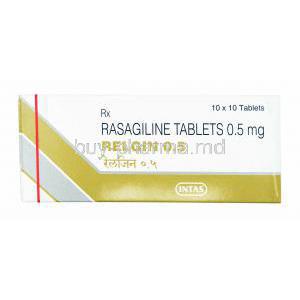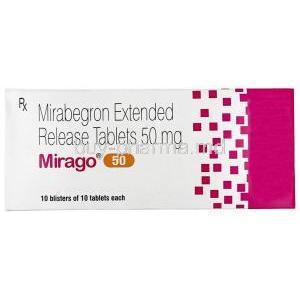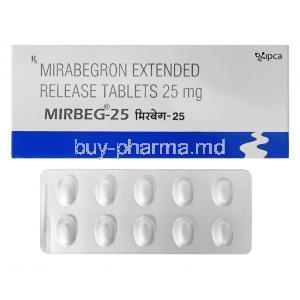Desmopressin
- I. Introduction
- II. Composition and Formulation
- III. Uses of Desmopressin
- IV. Off-Label Uses of Desmopressin
- V. Mechanism of Action
- VI. Dosage and Administration
- VII. Side Effects of Desmopressin
- VIII. Drug Interactions
- IX. Contraindications and Warnings
- X. Administration in Special Populations
- XI. Overdose and Management
- XII. Storage and Handling Precautions
- XIII. Important Precautions and Careful Administration
I. Introduction
A. Introduction to Desmopressin: Desmopressin is a man-made version of the vasopressin hormone that occurs naturally in the gland. It is highly valued for reducing kidney urine production, making it extremely useful in treating various disorders. B. Historical. Approval by FDA: The path taken by Desmopressin from being a therapy to becoming an FDA-approved medication showcases its effectiveness and safety. It was first created in the 20th century and underwent extensive clinical evaluations before becoming a widely used treatment option worldwide. C. Article Scope: This article explores the facets of Desmopressin, ranging from its complex chemical composition to its wide range of clinical applications. By understanding how it is utilized in modern medicine, readers will gain insight into its diverse uses and benefits.
II. Composition and Formulation
A. The chemical structure of Desmopressin shows significant changes from vasopressin, resulting in increased antidiuretic potency and reduced vasopressor effects. B. Desmopressin is available in oral tablets, nasal sprays, and injectable solutions. C. These formulations of Desmopressin contain pharmacologically inert ingredients that are important for maintaining stability, improving bioavailability, and ensuring patient acceptance.
III. Uses of Desmopressin
A. Main Uses:
- Desmopressin plays a role in managing Central Diabetes Insipidus by effectively reducing excessive urination and thirst 1.
- Many children and their families have found relief from nocturnal enuresis thanks to the effectiveness of Desmopressin 1.
- Desmopressin proves beneficial for types of Von Willebrands Disease by increasing the levels of von Willebrand factor in the plasma 1.
B. Additional Uses:
- Desmopressin helps raise Factor VIII activity, providing an advantage for individuals with mild to moderate Hemophilia A 1.
- Another aspect of its versatile therapeutic profile is its ability to improve bleeding tendencies in patients with renal failure 1.
IV. Off-Label Uses of Desmopressin
A. Introduction to Off-Label Prescribing:
- The utilization of Desmopressin for purposes other than its approved indications results from the perceived advantages it offers in treating conditions beyond its primary uses 1.
B. Noteworthy Off-Label Applications:
- Desmopressin has been used off-label to address specific psychiatric disorders and explore additional potential applications through clinical research 1.
- Desmopressin has been used off-label to manage urinary incontinence in women 2.
V. Mechanism of Action
A. How Desmopressin Works: Desmopressin's primary mechanism of action is to mimic vasopressin's effects, helping increase water reabsorption in the renal tubules. B. Impact on Vasopressin Receptors: Desmopressin specifically targets the V2 receptors found in the kidney, which allows it to have effects related to fluid balance while minimizing any unwanted vasopressor activity. C. Biochemical Pathways Affected: By influencing pathways in the kidneys, Desmopressin has a significant role in maintaining fluid balance and promoting proper hemostasis.
VI. Dosage and Administration
A. Guidelines for Appropriate Dosage: The dosage of Desmopressin varies depending on the condition and how the patient responds to it. This means that a personalized approach is necessary for each individual. B. Adjusting the Dosage: There are situations where adjustments to the dosage are necessary, such as considering the patient's age or if they have any kidney problems. C. Different Ways to Administer: Desmopressin can be taken orally through the nose or by injection, which makes it more accessible and adaptable to meet patient needs.

VII. Side Effects of Desmopressin
A. Common Side Effects: Although Desmopressin is generally well tolerated, it may cause headaches, nausea, and occasional abdominal cramps in some cases. B. Serious Adverse Reactions: While rare, being vigilant for adverse effects such as hyponatremia (low sodium levels) and severe allergic reactions is essential. C. Long-Term Side Effects: It is advisable to monitor for electrolyte imbalances and other systemic effects when using Desmopressin over an extended period.
VIII. Drug Interactions
A. Common Drug Interactions: Desmopressin interacts with medications, including NSAIDs and SSRIs. It's important to note that these drugs can enhance its effect, which may increase the risk of water retention and hyponatremia. B. Potential for Interaction with Alcohol: Consuming alcohol while taking Desmopressin can worsen its side effects and the potential for hyponatremia. Patients should limit or avoid alcohol consumption during this medication. C. Interaction with Other Hormonal Therapies: If you use hormonal treatments like corticosteroids H2 antagonists, and Desmopressin, it is essential to monitor their combined effects carefully to prevent any potential exacerbation or unintended side reactions.
IX. Contraindications and Warnings
A. There are situations where Desmopressin should not be used, such as If someone has a known allergy or sensitivity to the drug or its ingredients or if someone has sodium levels in their blood (hyponatremia). If someone has kidney problems. B. It is essential to be cautious when using Desmopressin in the following cases: People with diseases, including high blood pressure. People with imbalances in body fluids or disturbances in levels. C. Healthcare providers should be careful. Closely monitor electrolyte levels and kidney function, especially for patients with underlying conditions that could worsen due to fluid retention.
X. Administration in Special Populations
A. Regarding patients, monitoring renal function becomes even more critical due to their vulnerability to electrolyte imbalances and kidney insufficiency. It may be necessary to make adjustments in dosage. B. In the case of women and nursing mothers, the use of desmopressin should only be considered if the potential benefits outweigh the risks to the unborn baby or infant. There is data available regarding its safety for these populations. C. While desmopressin proves effective for conditions like nocturnal enuresis, it is crucial to administer appropriate dosages and closely monitor for potential side effects such as hyponatremia.
XI. Overdose and Management
A. Signs and Symptoms of Overdosing: When someone takes too much Desmopressin, they may experience symptoms like headaches, confusion, weight gain due to retaining fluids, and, in severe cases, low sodium levels in the blood. B. Immediate Actions for Overdose: In case of an overdose, immediate steps should be taken to address sodium levels. These include discontinuing Desmopressin, limiting fluid intake, and administering saline solution for severe cases. C. Long-Term Management Approaches: Managing an overdose situation requires evaluation of the dosage and continuous monitoring of sodium levels in the blood to ensure proper long-term treatment.

XII. Storage and Handling Precautions
A. It is advisable to store Desmopressin from light and moisture at room temperature to maintain its effectiveness. B. When handling Desmopressin, it is vital to take precautions against contamination. Disposal should be done following the guidelines for waste to prevent environmental harm. C. The stability of Desmopressin is ensured by adhering to the recommended storage conditions. The shelf life may vary depending on the formulation used.
XIII. Important Precautions and Careful Administration
A. Monitoring Needs: Monitoring blood pressure, electrolyte levels, and kidney function is crucial to prevent negative consequences. B. Adjusting Doses: The dosage should be customized based on each patient's requirements, considering age, body weight, and other medical conditions. C. Educating Patients and Ensuring Compliance: It is essential to educate patients about the significance of following the dosing schedule, being aware of potential side effects, and attending regular medical checkups. These practices can significantly improve the effectiveness of the treatment.















